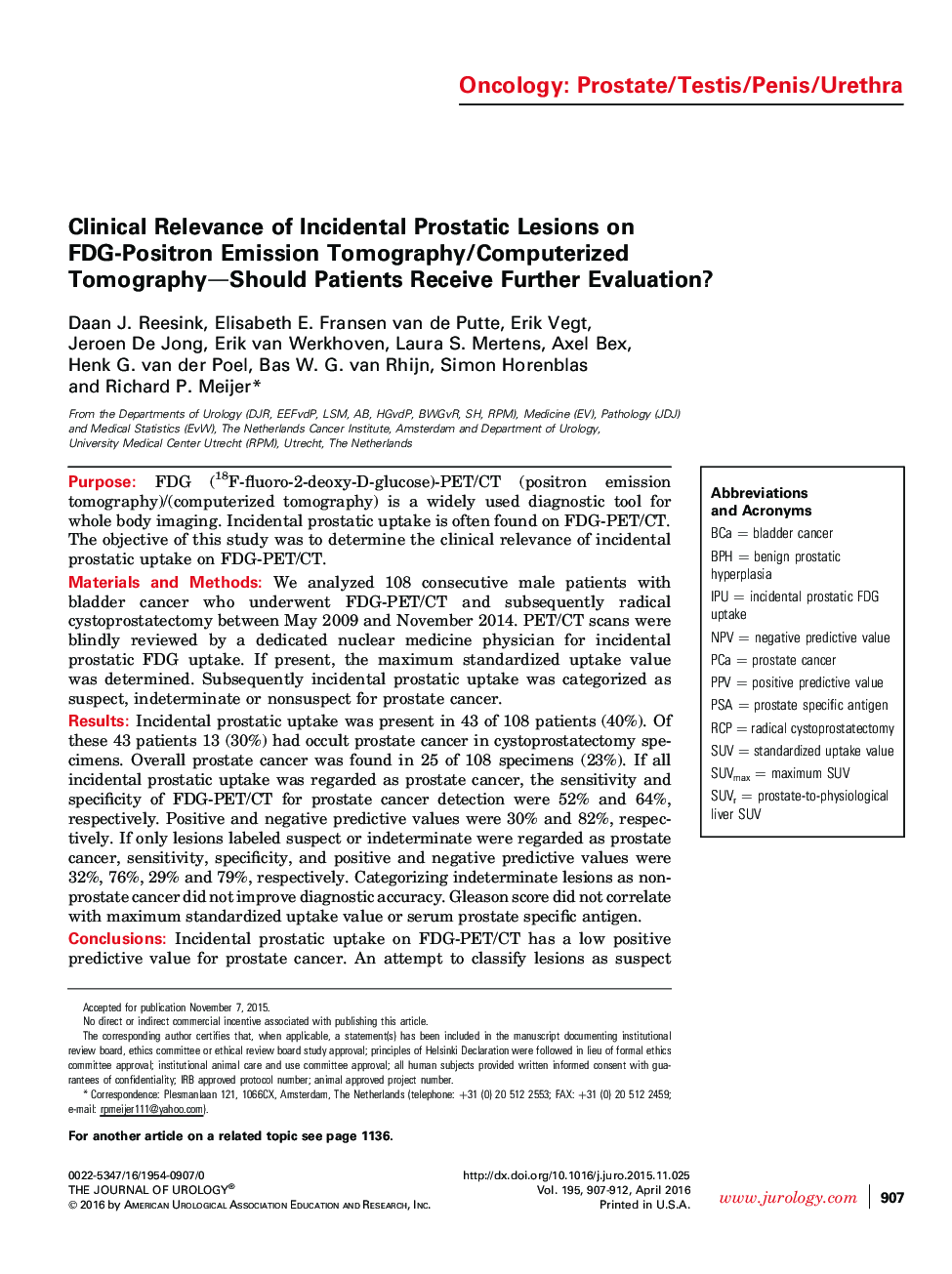| کد مقاله | کد نشریه | سال انتشار | مقاله انگلیسی | نسخه تمام متن |
|---|---|---|---|---|
| 3858529 | 1598878 | 2016 | 6 صفحه PDF | دانلود رایگان |

PurposeFDG (18F-fluoro-2-deoxy-D-glucose)-PET/CT (positron emission tomography)/(computerized tomography) is a widely used diagnostic tool for whole body imaging. Incidental prostatic uptake is often found on FDG-PET/CT. The objective of this study was to determine the clinical relevance of incidental prostatic uptake on FDG-PET/CT.Materials and MethodsWe analyzed 108 consecutive male patients with bladder cancer who underwent FDG-PET/CT and subsequently radical cystoprostatectomy between May 2009 and November 2014. PET/CT scans were blindly reviewed by a dedicated nuclear medicine physician for incidental prostatic FDG uptake. If present, the maximum standardized uptake value was determined. Subsequently incidental prostatic uptake was categorized as suspect, indeterminate or nonsuspect for prostate cancer.ResultsIncidental prostatic uptake was present in 43 of 108 patients (40%). Of these 43 patients 13 (30%) had occult prostate cancer in cystoprostatectomy specimens. Overall prostate cancer was found in 25 of 108 specimens (23%). If all incidental prostatic uptake was regarded as prostate cancer, the sensitivity and specificity of FDG-PET/CT for prostate cancer detection were 52% and 64%, respectively. Positive and negative predictive values were 30% and 82%, respectively. If only lesions labeled suspect or indeterminate were regarded as prostate cancer, sensitivity, specificity, and positive and negative predictive values were 32%, 76%, 29% and 79%, respectively. Categorizing indeterminate lesions as nonprostate cancer did not improve diagnostic accuracy. Gleason score did not correlate with maximum standardized uptake value or serum prostate specific antigen.ConclusionsIncidental prostatic uptake on FDG-PET/CT has a low positive predictive value for prostate cancer. An attempt to classify lesions as suspect or nonsuspect did not increase diagnostic accuracy. Based on these results physicians should be cautious about applying invasive diagnostic methods to detect prostate cancer in case of incidental prostatic uptake on FDG-PET/CT.
Journal: The Journal of Urology - Volume 195, Issue 4, Part 1, April 2016, Pages 907–912